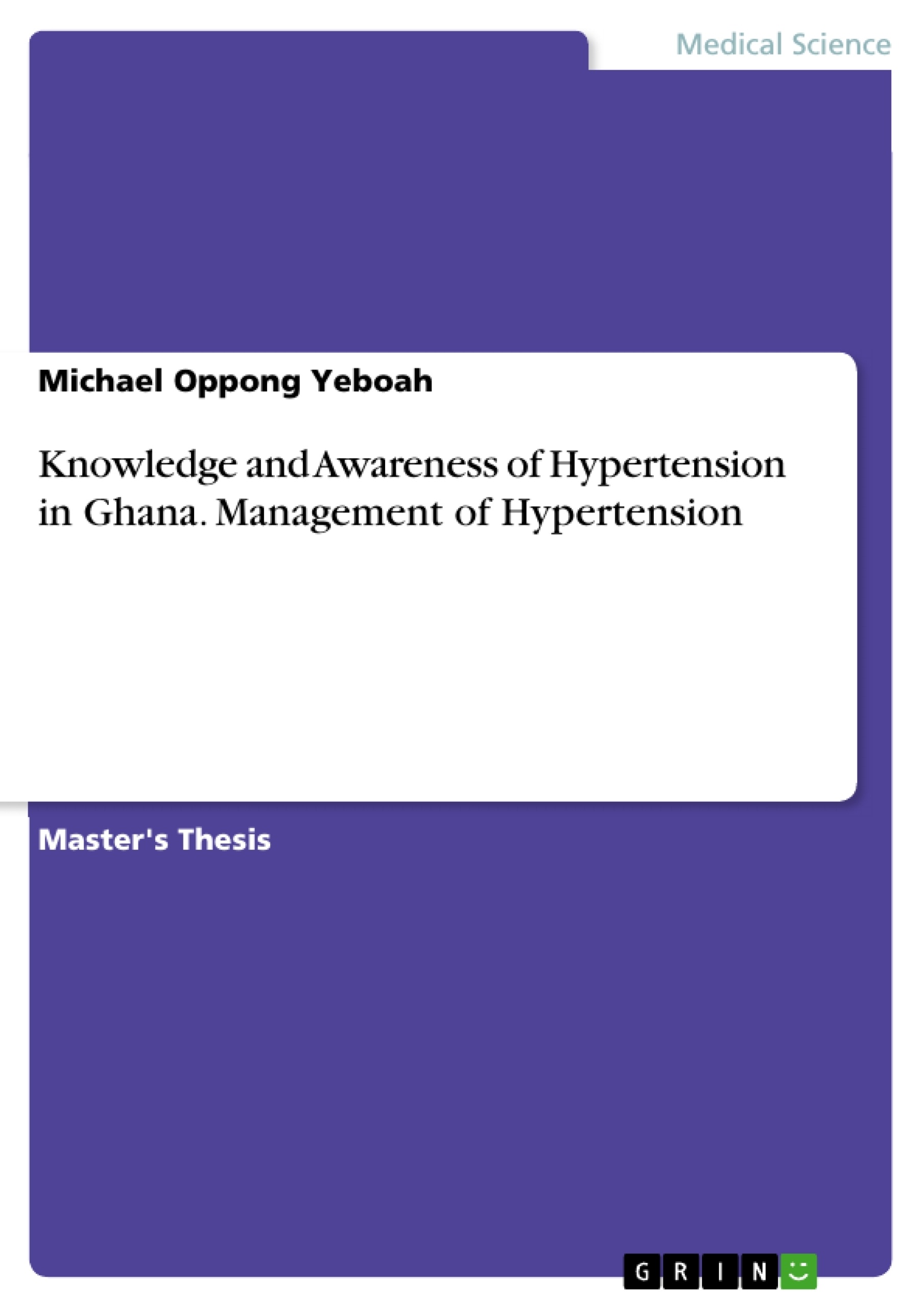This study aims to assess the knowledge and awareness of hypertension among people in Ghana. A descriptive cross-sectional survey was used to carry out the study. A total of 408 participants were recruited from the municipality. The instrument used for data collection was a structured questionnaire, which assessed their awareness-level and knowledge-level on hypertension. The Statistical Package for the Social Sciences (SPSS) was used for the analysis of data.
With a total of 408 who participated in the study, 48.3 % were female and 51.7 % were male. Hypertension awareness was around 89 % among the participants. There was a significant level of awareness on hypertension among the respondents from the hypothesis t-valve (0.994) and p-valve (0.044). Most of the participants were able to determine BP 120/80 mm Hg as the average blood pressure and BP > 140/90 mm Hg as hypertension, respectively. When it comes to management option, 60 % preferred an orthodox treatment and 44 % knew stroke as a risk factor of hypertension.
Though the majority of the participants were educated and more than half were not able to mention drugs as a way to manage hypertension. In general, the knowledge and awareness-level of hypertension was good. Nevertheless, more research needs to be done to further explore this. The spike in incidence of adult related hypertension is now among one of the most significant public health problems globally. Prevention of hypertension-related complications can be achieved when individuals become aware of the condition and have knowledge on the importance of control of their blood pressure.
Inhaltsverzeichnis (Table of Contents)
- CHAPTER ONE
- INTRODUCTION
- 1.0 Background to the Study
- 1.1 Statement of the Problem
- 1.2 Purpose of the Study
- 1.3 Objectives of the Study
- 1.3 Research Questions
- 1.4 Research Hypotheses
- 1.5 Significance of Study
- 1.6 Structure of the Thesis
- CHAPTER TWO
- LITERATURE REVIEW
- 2.0 Introduction
- 2.1 Definition of hypertension
- 2.1.1 Blood Pressure Measurement
- 2.1.2 Mild Hypertension
- 2.1.3 Severe Hypertension
- 2.1.4 Types and Causes of Hypertension
- 2.1.5 Other Types of Hypertension
- 2.1.6 Hypertension and Pregnancy
- 2.1.7 Risk Factors of Hypertension
- 2.1.8 Complications of Hypertension
- 2.1.9 Hypertension Management
- 2.2 Prevalence and burden of hypertension
- 2.3 Pathophysiology of Hypertension
- 2.4 Knowledge and Awareness of Hypertension
- 2.5 Theoretical Perspectives of the Study
- CHAPTER THREE
- METHODOLOGY
- 3.0 Introduction
- 3.1 Research Design
- 3.2 Research Area
- 3.3 Sampling Techniques
- 3.4 Inclusive Criteria
Zielsetzung und Themenschwerpunkte (Objectives and Key Themes)
This dissertation examines the level of knowledge and awareness of hypertension among the population of Ga West Municipality, Greater Accra, Ghana. The study aims to contribute to the understanding of hypertension awareness in this specific community and identify potential strategies for improved management and prevention.
- Knowledge and awareness of hypertension
- Prevalence of hypertension in Ga West Municipality
- Factors influencing knowledge and awareness
- Effectiveness of hypertension management strategies
- Recommendations for improving awareness and control of hypertension
Zusammenfassung der Kapitel (Chapter Summaries)
Chapter One provides an introduction to the study, outlining the background of hypertension, the statement of the problem, purpose of the study, objectives, research questions, hypotheses, and significance of the research. The chapter also presents the structure of the thesis.
Chapter Two explores the existing literature on hypertension, examining the definition, blood pressure measurement, types and causes, prevalence, risk factors, complications, and management of the condition. It also discusses the pathophysiology of hypertension, knowledge and awareness of the condition, and relevant theoretical perspectives.
Chapter Three outlines the methodology employed in the study, including the research design, research area, sampling techniques, and inclusion criteria.
Schlüsselwörter (Keywords)
The primary keywords and focus topics of this dissertation are: hypertension, blood pressure, awareness, knowledge, Ghana, Ga West Municipality, public health, prevention, management, health education, community health, research.
- Quote paper
- Michael Oppong Yeboah (Author), 2020, Knowledge and Awareness of Hypertension in Ghana. Management of Hypertension, Munich, GRIN Verlag, https://www.grin.com/document/978228



